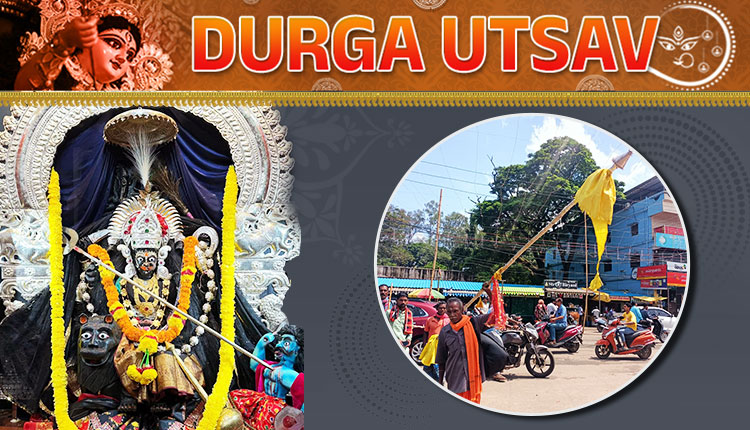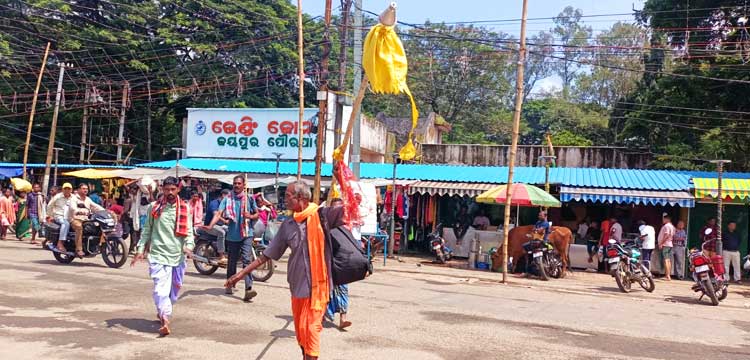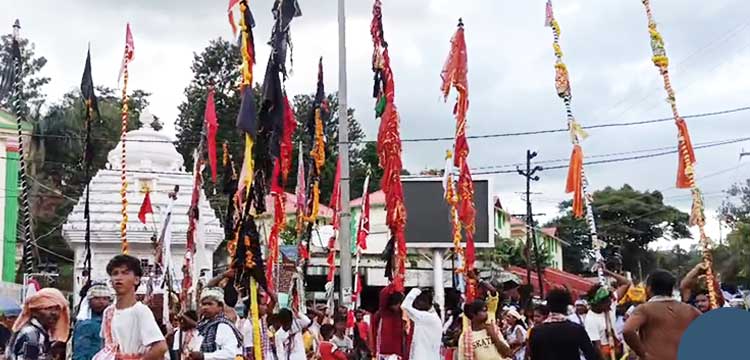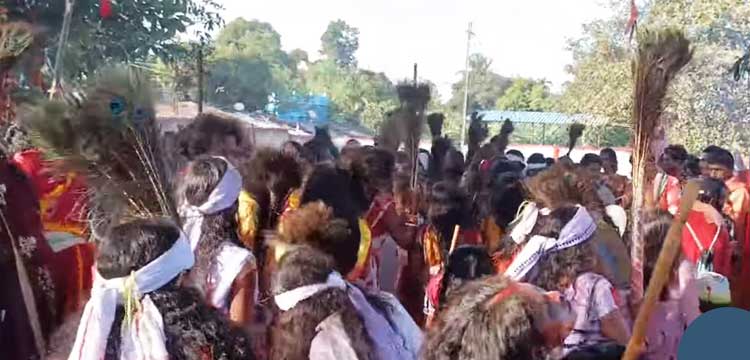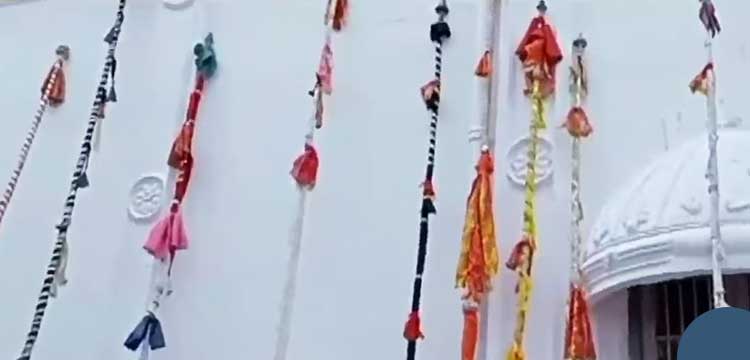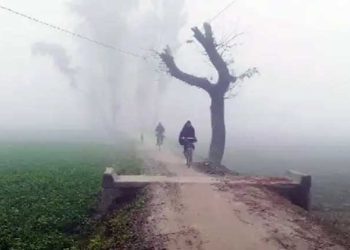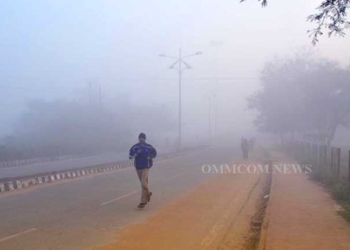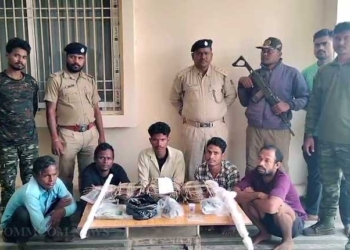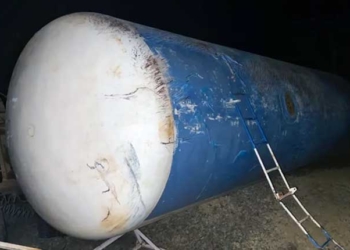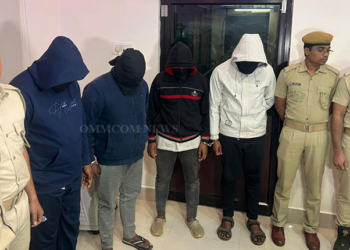Jeypore: On the tenth day of Navratri, as the chants to the goddess echo across the undivided Koraput region of Odisha, Jeypore transforms into a stage for one of its most unique and powerful rituals — the Lathi Puja.
At the heart of this celebration is Maa Bhagabati, the presiding deity of Jeypore, who is not worshipped in solitude but in the company of countless village deities brought forth in the form of sacred lathis (sticks).
A Ritual Rooted in Invitation
The Lathi Puja begins on Mulastami, when a ceremonial garland — the Ajna Mala — is received at the Maa Bhagabati temple. It signals the start of invitations to nearly 60 Devi shrines across Koraput, Umarkote, Nandapur, Raighar, and beyond. This invitation is more than formality; it is a call to kinship, summoning distant goddesses to join their sister at Jeypore.
The Journey of the Lathis
From distant villages, devotees shoulder their lathis — some accompanied by swords, umbrellas, and palanquins — and embark on long journeys by foot. For the Bhumia, Gadaba, Paraja, Saura, Bhatra, Durua, Kandha, and other tribal communities, this is not just a procession but an act of devotion. The air resounds with tribal drums, flutes, and chants as each group approaches Jeypore, infusing the town with raw energy.
The Grand Assembly at Jeypore
On Dashami, the sacred objects converge at the Maa Bhagabati temple. From there, they are taken in a dazzling procession — the Patuara — to the Dussehra ground. Here, rituals such as the Aparajita Puja unfold, and the lathis, treated as living embodiments of the goddess, are worshipped with offerings of flowers, incense, and traditional sacrifices.
Bhairav Joins the Celebration
What makes Jeypore’s Lathi Puja even more distinctive is the presence of Bhairav, believed to be the divine consort of Maa Bhagabati. He arrives from Jamunda, carried with equal reverence. During a midnight ritual, Bhairav and Bhagabati are symbolically united — a sacred reminder of divine partnership deeply ingrained in local spiritual imagination.
A Carnival of Culture
Beyond ritual, Lathi Puja is a cultural explosion. More than 100 villages participate, their processions lighting up Jeypore with traditional attire, dance, and music. The Dussehra ground becomes a melting pot of communities, each offering a glimpse into its unique traditions yet finding shared identity in devotion to the goddess.
Why It Matters
The Lathi Puja is not just a festival but a . It is where tribal beliefs and Hindu rituals meet, where sacred sticks become carriers of faith, and where devotion fosters solidarity across villages. It embodies:
- Cultural continuity, tracing back to the Jeypore kings who once patronized these traditions.
- Unity in diversity, bringing together tribes and castes in a common act of worship.
- Symbolic richness, where the goddess is not confined to one shrine but moves with her people.
A Celebration of the Divine and the Human
In Jeypore, the Dussehra festival is not only about slaying the demon king but also about reaffirming ties between deities and devotees, between villages and their goddess. The Lathi Puja is living proof that devotion can take the form of a journey, a procession, a dance, and above all, a collective celebration of faith.




